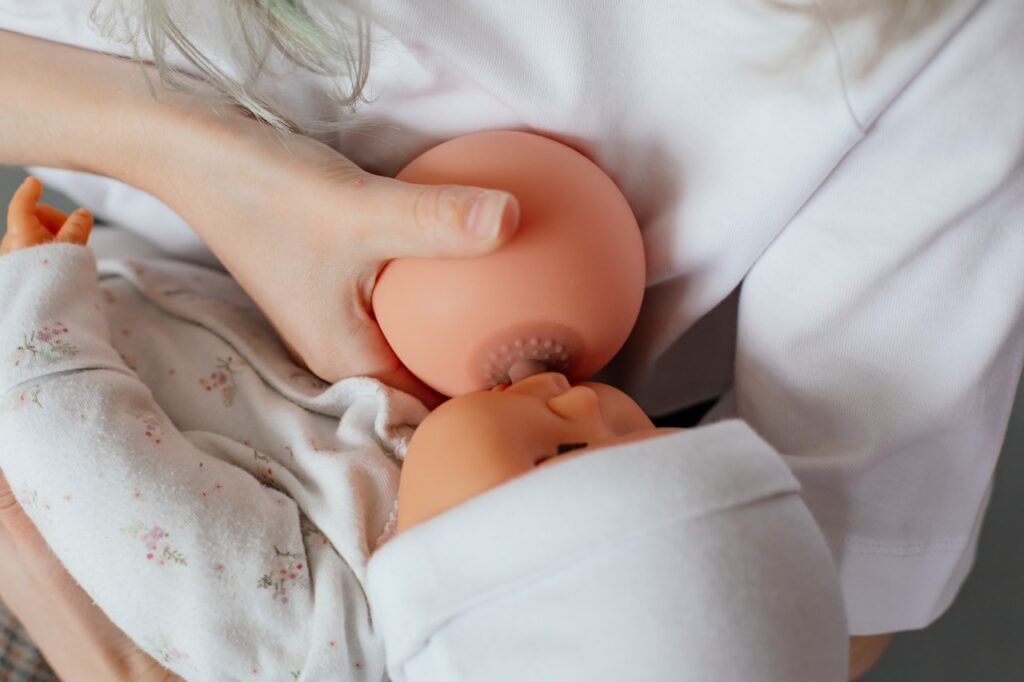Partner Tips to Support Breastfeeding
Practical Tips + Hands-on Ideas (not on the breast)
How can you support your lactating partner? Breastfeeding/chestfeeding has many benefits, but it can feel demanding & exhausting in the early days. Establishing a milk supply, learning to feed a newborn and finding a new family rhythm consumes loads of caloric, physical, mental and daily energy. Caring partners want to help out, but usually lack the glandular tissue to produce milk. So what can you actually do to help out?

Communicate
I know it seems like I may be stating the obvious here, but do some postpartum planning before birth. Talk with each other about your parenting, eating and sleeping plans ahead of time, for yourselves and for your new baby.
Lack of communication and differing expectations can be a source of frustration as you traverse this new terrain together. Not only do you have to learn to parent, but if you are co-parenting you have to work out a plan that works for everyone, especially your baby. Hold the plans as loosely as you do birth plans, and only try to control what you can, like making sure people feed your family in the early weeks.
When planning to support breastfeeding, the first step is to talk about it together and ask your partner how you can help. What do they need from you to feel successful? If they aren’t quite sure yet, read on for various tips to make you uber supportive.

Learn About Lactation
Take a prenatal bodyfeeding class together to learn the basics. You will gain a deeper understanding of the biological needs of newborns, their feeding behaviors, how to spot hunger cues, the physiology of making milk and how to establish & maintain a supply + early challenges and how to help.
When you know what to expect, it normalizes the experience. Yes, they might eat 8-12 times or more in 24 hours, completely normal!
Massage Skills
Hopefully, you built up lots of massage skills while preparing for birth. Necks and upper backs feel very strained when holding a new baby & feeding frequently. Oxytocin also flows better with relaxation so don’t underestimate the power of a good shoulder massage to release building tension and help milk flow.
Feed Them
Lactation requires more daily calories than pregnancy! Feed them so they can feed the baby. Ensuring they are eating healthy, frequent meals and snacks is important for postnatal recovery and building a milk supply.
Human milk is full of amazing ingredients but it is also mostly water. Keep the liquids flowing since they may feel extremely parched in the middle of a feed.

Beware: The Shared Feeding Trap
Most partners think the best way to share in the feeding responsibility is by actually sharing the feeds. This only works splendidly if you are a lactating partner as well so double breasted households, feed on. This is also an option if babies are drinking exclusively pumped milk or combo feed with formula.
If you aren’t making milk, the logistics of this actually complicate the early milk making process. Instead of just handing off the baby and taking a hot bath, they must pump ahead to make sure you have said bottle of milk, and then while you are feeding, they are most likely pumping to maintain supply and avoid engorgement. Not quite as relaxing as bath time.
It is usually a better idea to use this first month mastering milk production and then begin pumping and sharing some of the feeds. Babies are also learning how to master latching, sucking and swallowing which are all survival skills. Taking a bottle is a bit different so consider your baby’s needs. It is easier for them to skill build if they are only learning one skill at a time.
Many lactation professionals will recommend at least 2 weeks of good feeding before beginning to pump so figure out what is working best for your family. Remember, there is no lack of childcare tasks for you to do – you can stay quite busy and connect with your baby through other activities, and you will find your own special ways to bond with your baby.
Stock the Stations
Set up 1-2 designated spaces for feeding. The main living space is the most reasonable option because they are about to clock a lot of hours at this new job and isolation in a random part of this house might make it well…isolating. Some people do prefer a more private space or need a back up space if visitors are present so plan accordingly.
The feeding space should include:

- comfortable, spacious chair – rocking chairs can be too narrow
- feeding or support pillows
- cart or shelf to organize bits & bobs
- nightlight or book light for keeping it dim at night
- snacks – easy to eat with one hand
- hydration – just keep the water flowing
- chargers
- remote, books, things to do
- breast pump & parts
- optional extras: nipple cream, breast pads or other paraphernalia

Practice other Skills
Babies need so much more care than just feeding. Breasts are also more than just food so keep in mind that babies are finding comfort in mom’s arms with close contact. They are already attuned to that body from pregnancy and are familiar with the smells, sounds and tastes. That body needs a break too though!
Family, friends or other parents can also take care of the many infant needs outside of milk including:
- diaper changes
- burping
- bathing
- changing clothes
- soothing – singing, walking, rocking
- attention
- sleeping
- comfort
- more diapers!
Learn to Share
Breasts are a body part with dual purpose – they can be both fun and functional, sexual and nutritious. You are both relating to them in a new way.
Navigating lactating bodies & breasts is new for everyone. First, let them recover from childbirth which is usually beyond that 6 week mark that you have an alert set for on your calendar.

Human hormones post birth are designed for natural birth control – less vaginal lubrication and lower sex drive will do the trick! Some breastfeeders are so touched out from feeding for hours that any extra stimulation is a no go anyway.
Nipples may be sore, healing or leaking milk. There might be a lot of additional add ins to the breastfeeding bra like absorbent nursing pads or nipple cream. Super sexy!
Oxytocin is a hormone that fills multiple roles. Think about it as the great ejector: sperm, babies, placentas, milk. It helps us feel connected and loved, but it also contracts to promote milk flow. Many new parents are shocked when oxytocin is released through orgasm and milk is possibly spraying out simultaneously. This might be a time to keep that bra on with the nursing pads!
This is also a transient time. Your child won’t be latched forever, but you might have to be the mature one and give them plenty of share time for a while. The American Academy of Pediatrics actually recommends your child receive human milk for 24 months so don’t rush it.
Still Protect the Space
Protecting the birth environment now shifts into protecting the feeding environment. Oxytocin flows best in a safe, protected space and it pushes out babies as well as pushing out milk.
Remember the oxytocin-friendly setting: dim, warm, relaxing music, safe touch and no unwanted people watching.
Make sure that visitors are limited to only helpers early on. Learning to feed a new baby is not a spectator sport. Frequent, unwanted visitors can inhibit feeding freely which impacts establishing a good milk supply as well as your baby having a good meal.
There is nothing wrong with openly feeding a hungry baby regardless of who is present, but if it decreases the likelihood that your partner feeds in the open, then curb the visits.
Logistics
Sometimes, early support is calling the closest lactation consultant and getting everyone ready and out the door. Trust me, quite a feat in the early weeks!
You might be required to be an extra set of hands to hold a breast, put on their nipple shield, help a baby latch, add the pillow supports or assist with position. (check out the dad with the twins) Sometimes 2 hands just isn’t enough to navigate this learning stage.
If they are pumping milk, you can become an expert at washing pump parts, assembling the pump, storing and thawing milk or any of the many interesting things that go into the process.
Birth was just the beginning!

Emotional Support
A postpartum parent recovering from birth and learning to lactate is in a very tender transition, physically and emotionally.
In addition to physical support, don’t forget the emotional side of feeding. Being your child’s sole support of nutrition can feel heavy sometimes.
Just like in birth, most parents need to feel like they are doing a good job so verbalize that. Let them know you see how hard they are working, cheer them on and literally only bring good vibes to the boob space. Milk flows with oxytocin so make them feel relaxed, loved, valued and appreciated. They seriously just grew an entire human and are now busy making milk to help that baby thrive!
If there are feeding challenges, many parents feel deflated and need an extra boost. If bodyfeeding is not going as planned, there are many ways to support it, but just keep in mind that emotions may be running high.
There are a myriad of ways to support your partner & baby while they establish early feeding. Don’t feel left out if you don’t lactate, you are an integral part to milk making success!









